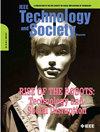Social and Environmental Impact of a Plant Disease Analysis Method Based on Object Extraction
IF 2.1
4区 工程技术
Q3 ENGINEERING, ELECTRICAL & ELECTRONIC
引用次数: 0
Abstract
Plant leaf infections are a common threat to global production in both the long and short terms, affecting not only many farmers but also consumers around the world. Early detection and treatment of plant leaf diseases are essential to promote healthy plant growth in agriculture and ensure sufficient supply and health security for the world’s geometric (population) growth. Detection of plant leaf diseases using computer-aided technologies is widespread today. In the first part of this thesis, we describe an artificial intelligence (AI) model that enables image analysis to facilitate disease detection and then present its contribution at the societal level. We used images of maize leaves and images of apples in fields from the standard PlantVillage repository for object localization. An efficient deep learning (DL) modified mask region convolutional neural network (Mask R-CNN) is proposed for autonomous segmentation and detection of the object to be analyzed in this research. The proposed work exploited the features learned by the Mask R-CNN model at various processing hierarchies. We achieved improved code generation of singular images of the detected objects and an overall accuracy of 98.89% on the validation sets. In the rest of our research, we wanted to show the impact of our solution at a social level while highlighting the important aspects that characterize good development. The specificity of this approach is to present the different AI solutions used for the analysis of agricultural crops, with the aim of highlighting their benefits and their impact on human activities.基于对象提取的植物病害分析方法对社会和环境的影响
无论从长期还是短期来看,植物叶片感染都是对全球生产的一种常见威胁,不仅影响到许多农民,也影响到世界各地的消费者。植物叶片病害的早期检测和治疗对于促进农业植物的健康生长、确保世界几何(人口)增长所需的充足供应和健康安全至关重要。如今,利用计算机辅助技术检测植物叶片病害已十分普遍。在本论文的第一部分,我们介绍了一种人工智能(AI)模型,该模型可通过图像分析促进病害检测,然后介绍其在社会层面的贡献。我们使用标准 PlantVillage 资源库中的玉米叶片图像和田间苹果图像进行对象定位。本研究提出了一种高效的深度学习(DL)修正掩膜区域卷积神经网络(Mask R-CNN),用于自主分割和检测待分析对象。所提出的工作利用了掩码 R-CNN 模型在不同处理层次上学习到的特征。我们改进了检测对象奇异图像的代码生成,在验证集上的总体准确率达到 98.89%。在接下来的研究中,我们希望展示我们的解决方案在社会层面的影响,同时强调良好发展的重要方面。这种方法的特殊性在于介绍用于分析农作物的不同人工智能解决方案,目的是突出它们的优势及其对人类活动的影响。
本文章由计算机程序翻译,如有差异,请以英文原文为准。
求助全文
约1分钟内获得全文
求助全文
来源期刊

IEEE Technology and Society Magazine
工程技术-工程:电子与电气
CiteScore
3.00
自引率
13.60%
发文量
72
审稿时长
>12 weeks
期刊介绍:
IEEE Technology and Society Magazine invites feature articles (refereed), special articles, and commentaries on topics within the scope of the IEEE Society on Social Implications of Technology, in the broad areas of social implications of electrotechnology, history of electrotechnology, and engineering ethics.
 求助内容:
求助内容: 应助结果提醒方式:
应助结果提醒方式:


